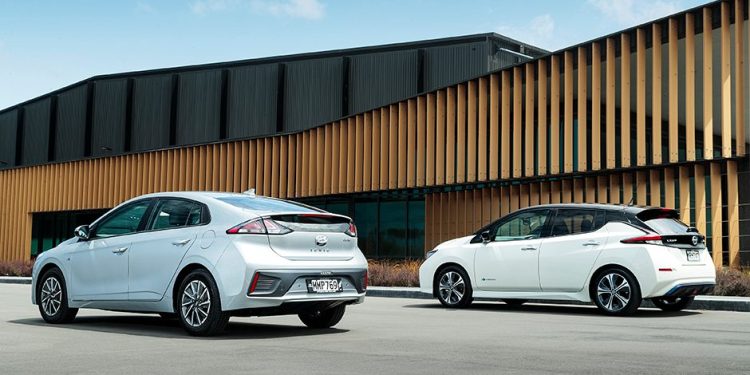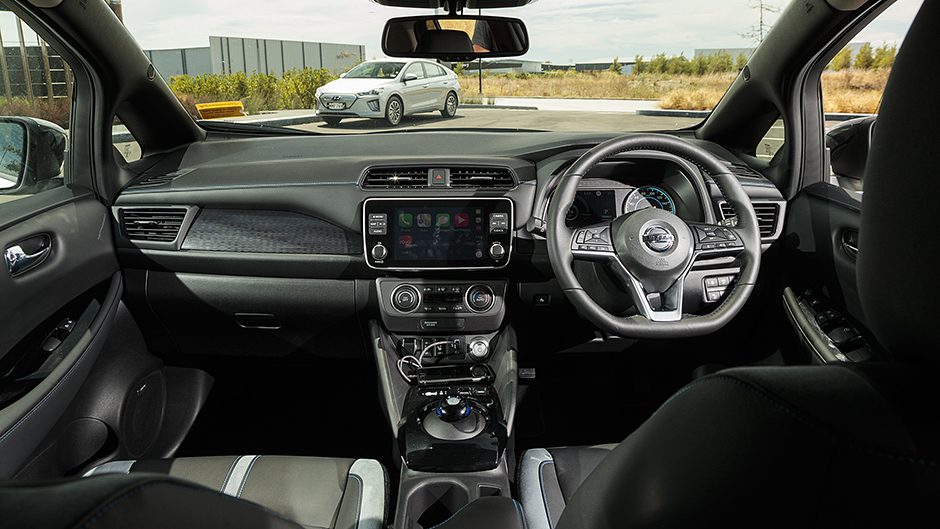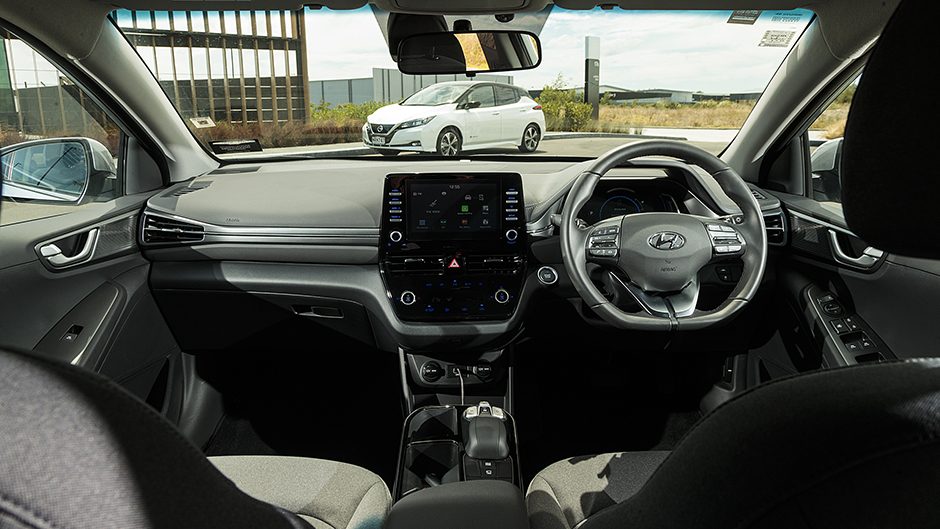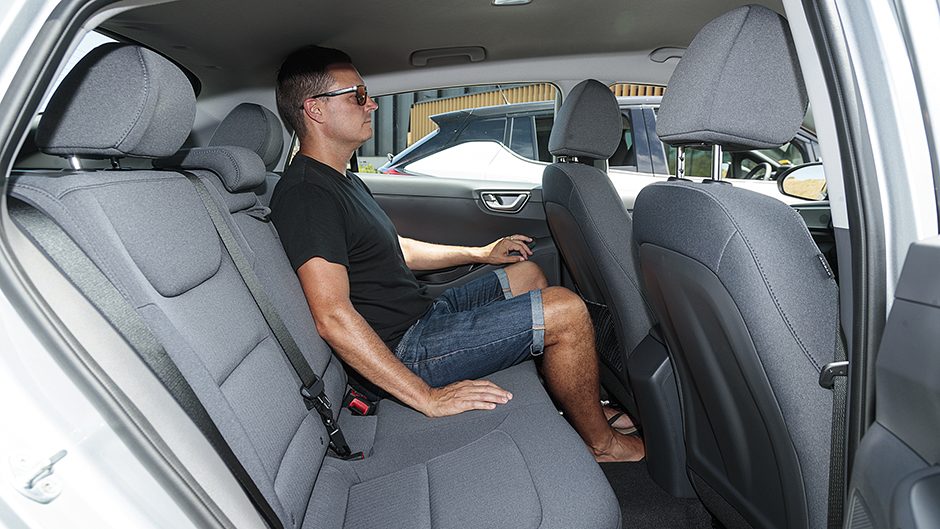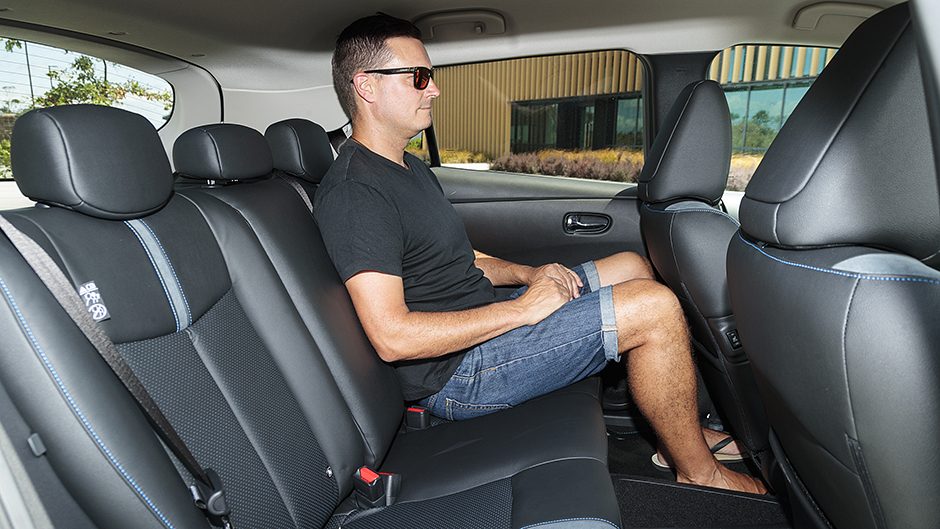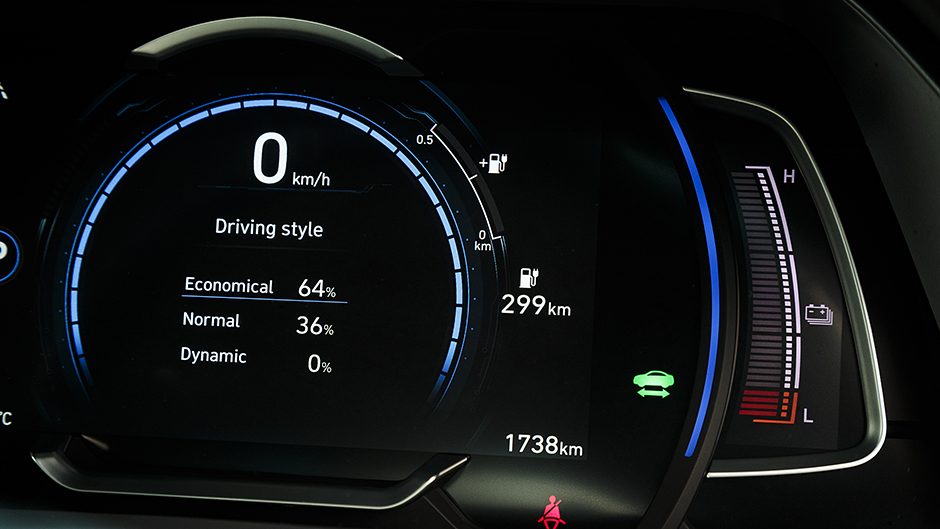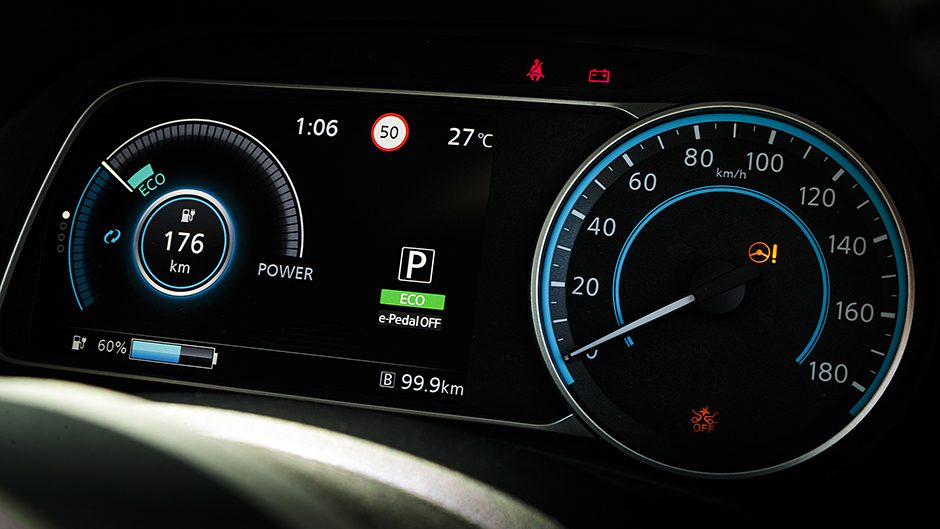2020 Nissan Leaf 110kW vs Hyundai Ioniq EV comparison
Words Kyle Cassidy | Photos Tom Gasnier
While EV buyers are infatuated with the Model 3, there are other options out there, admittedly with less range than the tesla. Two slightly cheaper offerings are the Ioniq and Leaf. Which is better?
Hyundai’s Ioniq was designed with electrification top of mind, offering hybrid, plug-in and battery variants to cater for varying market preferences. Hyundai says its plug-in has had a tepid reception here with buyers preferring to go for the full BEV instead.
Plug-ins get around the whole range anxiety thing, but do need constant recharges to reap the low emissions benefits, and are still relatively pricey thanks to the costs associated with two power units. Demand for conventional hybrids has increased of late, however, as Hyundai says these allow corporates to transition to lower emission technology without such a big up-front outlay.
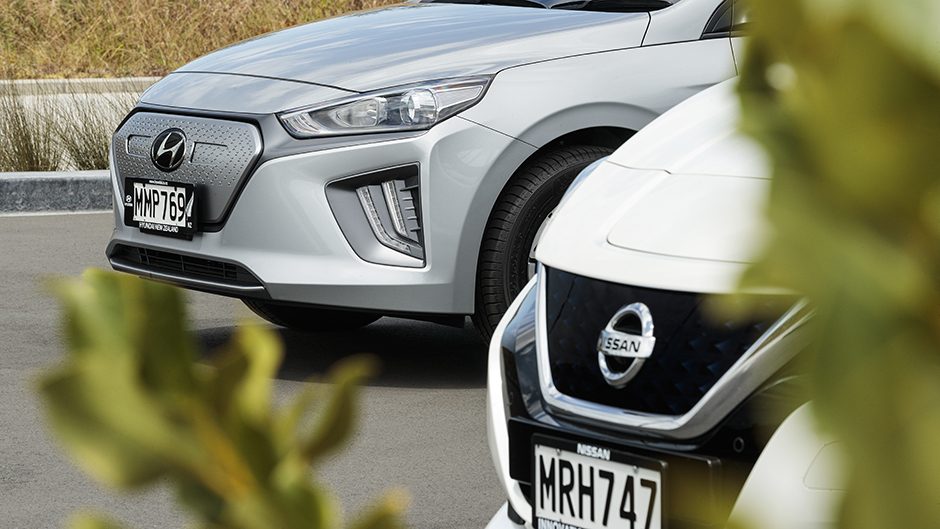
But with the UK Government’s recent announcement to ban the sale of hybrid vehicles from 2035, these low emissions alternatives could be on the outer; you’d imagine other European markets will follow suit to really put the screws on gas-burning emitters. As a technology taker, this will have a flow-on for our market, eventually, as it’s still 15-20 years away. But it points towards increasing governmental pressures for us all to go electric; we won’t have a choice eventually.
Here the electric options still aren’t numerous. One of the most popular NZ-new EV models here has been the Hyundai Ioniq. But NZ EV buyers like range, which is why Tesla is popular. The Model 3 continues to sell well, with 657 retailed last year, and 48 bought in January. Kona was the next most popular with 395 in 2019 and 38 in for the first month of 2020. Ioniq was back in third in 2019, on 160, with eight sold in January. A new and improved model, with greater range, might help sales then.
Other than Tesla, the most well known EV is the Nissan Leaf thanks to all those imports humming around, some 9000 apparently. The latest model has been available new here since midway through last year. But the import scene still hampers sales; just over 80 sold new here last year and 10 in January. Ioniq and Leaf occupy the $60k bracket, so which is the better buy?
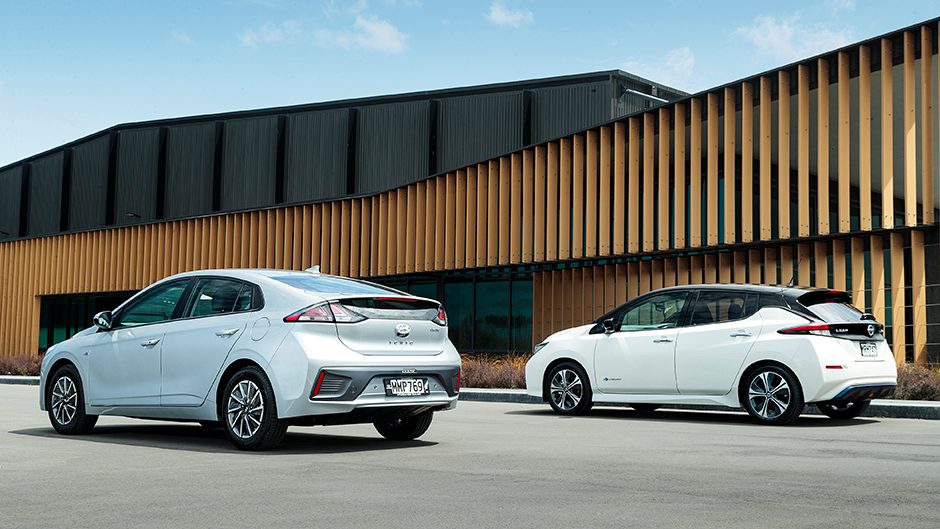
What’s new with the Ioniq?
Hyundai has refreshed the Ioniq’s looks with a new stylised grille, alloys, dual DRL design and LED lights. The interior has been modernised with a new 10.25-inch color display and touch-sensitive ventilation controls.
Hardware updates include an increase in motor power from 88 to 100kW while the battery capacity has risen from 28 to 38kWh, allowing a quoted max range of 311km on the WLTP test.
There’s an improved 7.2kW on-board charger to allow faster battery cooking. The cost option wall box is said to zap it in 5-6 hours, adding around 48km of range per hour. It’ll take 18 hours on the 10amp portable charger and a 50kW DC charger will take it to 80 per cent in 56 minutes. Prices have risen $6K thanks to the exchange rate and added specification/technology, with the entry model, tested here, now at $65,990 and the Elite is $71,990.
The Leaf squeaks under the $60k mark, though the portable 8amp, three-pin charger is an $800 option where it’s included with the Hyundai. The Leaf’s 40kWh battery feeds a 110kW/320Nm motor and it offers a 270km range according to the WLTP test. Its 6.6kW onboard charger allows a 6.6kW/32A wall box ($1500-2000) to fully charge the battery in 7.3 hours, the 8A charger takes all day, literally, while a 50kW DC charge does 80 per cent in 40-60 mins.
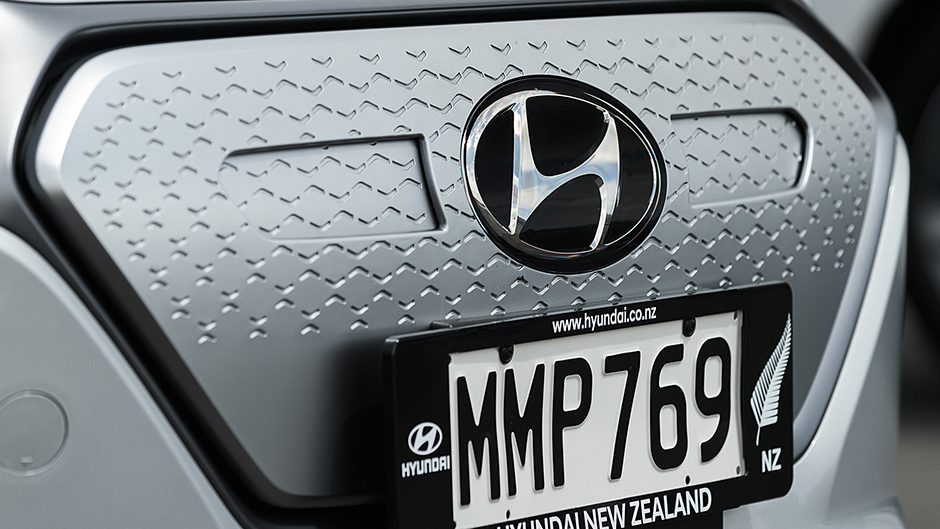
On the charge
People like the EV drive experience thanks to the torque-rich, refined delivery. They are reserved yet respond instantly when you need to go; there’s no transmission dallying and with instantaneous torque, they accelerate as soon as you hit the go pedal. These two can be brisk at urban speeds considering their mild outputs.
The Leaf feels like it has a dose more oomph to its delivery, until you put the Hyundai in its Sport mode and then its delivery is the more electric. At least at urban speeds, as the Nissan is actually quicker against the clock, and stroppier as speeds rise. The Leaf has more polish to its urban ride and is more reticent on road. Both have easy steering, though each has a slight centring action after the turn.
They are relatively conventional to drive. The Leaf’s gear selector stub is weird, but easier to use than the push buttons of the Ioniq. One difference between them is the regenerative braking process. Along with the B mode of the trans, the Leaf has its E-pedal, which adds a strong regen effect every time you release the accelerator.
It takes some getting used to, and requires a smooth right foot to modulate its effect. Even with the E-pedal function switched off, the Leaf has a light level of regen. The Hyundai has three levels of regeneration, adjustable via the paddles behind the wheel.
It also has an auto mode, adjusting the level according to your driving, while using the radar sensor from the active cruise to slow you in traffic. It’s pretty good, stepping itself through the levels for a more controlled slow down, though occasionally you wonder why it’s suddenly jumped to level three and is reigning you in rapidly.
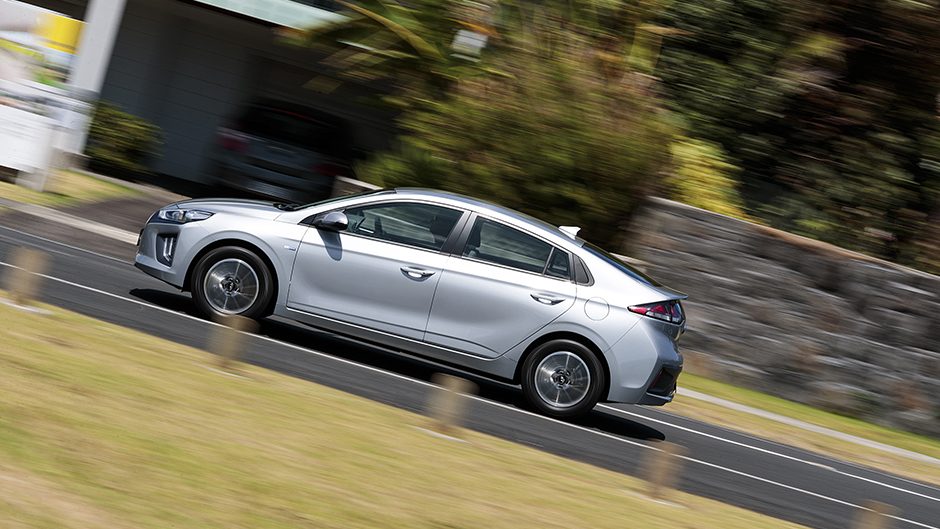
You can also paddle it right back to level zero and enjoy the coast. These EVs are heavy, with little driveline friction so once up and running, they coast freely. The Ioniq now features a recuperation indicator to keep tabs on your regen efforts. It only extends to 0.5km, and it takes some judicious use of the system to max it out around town.
On the fast charger, we found the Leaf was the quicker cooker. Hooking up to a 50kW outlet, with the batteries around the 60 per cent mark, 20 mins of flow added 72km to the Leaf, and 59km for the Ioniq, which was actually on for three minutes more.
There are still too few of these fast chargers about the place, and when there’s not already someone plugged in there, it can be out of order, as we found out. Which is why you should really invest in a home wall box.
On consumption, the Hyundai is a little more efficient, its trip computer relaying a 12kWh average around town to the Nissan’s 14, both driven with a light right foot to maximise range. Both rose to 16kWh during the more demanding phase of testing.
When shown a winding path, it’s the Leaf that does things better. It administers the bumps more effectively, the Ioniq’s rear end gets bullied about, and so it doesn’t turn as well as a result. The Leaf is more secure, punches better above 90km/h and with the weight centralised, corners with greater assurance. Its dynamic competence can genuinely surprise.
The steering in both is okay, though rather digital, and the brakes are adequate, until you pump them hard and the pedal feel goes to jelly.
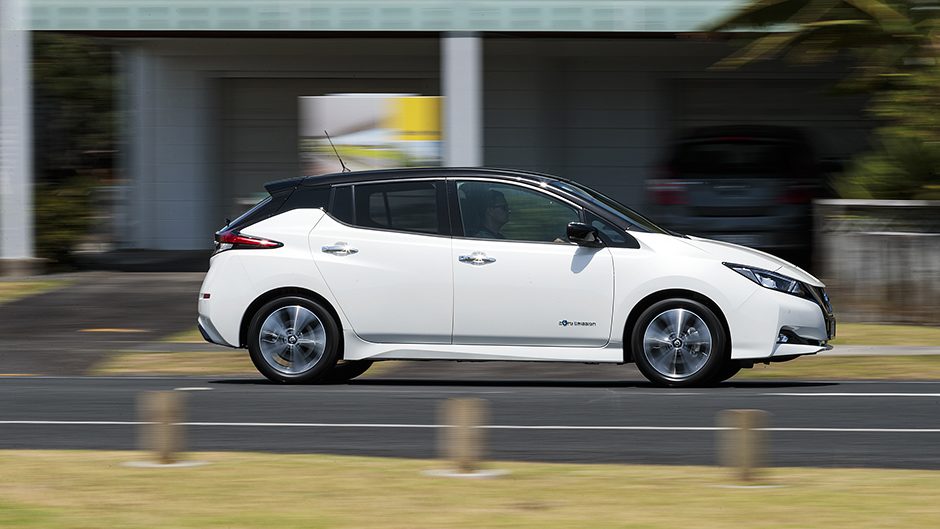
Practical as well
While neither is a true beauty, both improve on those that went before them. The interior of the Ioniq is much improved, and preferable to the Nissan’s. The Hyundai has better cabin storage with a big receptacle beneath the swish new centre stack. The touch-sensitive dash pleases the eye but the conventional buttons of the Leaf are easier to use on the go.
Ioniq has a more modern, tech savvy look however (it’s strange that Leaf has an analogue speedo) and has fewer hard plastics. And things like an electric park brake (the Leaf still with a foot-operated pedal) make the interior a nicer place to be.
The cheaper Leaf offers a few more niceties with its leather, heated seats (though we don’t mind the cloth trim of the Ioniq), in-built nav and a surround view camera. Each has a good range of active safety gear as standard though there’s no BSM on the Hyundai, while the Nissan misses out on active lane keeping. Both have active cruise.
The Ioniq has a preferable seating position with better adjustment (including at the wheel, the Nissan only altering for height) whereas the Leaf’s is set too high though is comfy. Hyundai’s infotainment screen is bigger with a higher resolution and better connectivity. It has a superior backing camera, even if it doesn’t offer the surround view option of the Nissan, which is a little hard to decipher.
You need to watch your head on the sloping roofline of the Ioniq as you enter the rear, where there’s not quite as much leg room as in the Leaf.
There’s not much in it for boot space, the Leaf’s hold deeper but the Bose stereo hardware sited on the floor fouls it up. The Ioniq’s boot is wide and long but shallow. Both have split folding, the Hyundai presenting a flattish floor while the Nissan gets a pronounced step. The Leaf has a space saver spare while Hyundai provides a tyre repair kit.
Which to choose – Leaf or Ioniq?
In the final tallying of points, neither really streaks ahead of the other. You might like the Ioniq’s interior cache and want the extra range, for which you’ll gladly pay the extra. The Nissan drives better, recharges faster in practise, and 270km is enough we have found from previous experiences, as long as you’re not travelling intercity that often. Its cheaper price and superior specification seal a narrow win here.
| Model | Nissan Leaf | Price | $59,990 |
| Engine | Electric, 110kW/320Nm | Drivetrain | FWD |
| Fuel Use | 0L/100km | C02 Output | 0g/km |
| 0-100km/h | 8.08 sec | Weight | 1584kg |
| Model | Hyundai Ioniq Electric | Price | $65,990 |
| Engine | Electric, 100kW/295Nm | Drivetrain | FWD |
| Fuel Use | 0L/100km | C02 Output | 0g/km |
| 0-100km/h | 9.20 sec | Weight | 1522kg |


